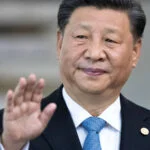On Wednesday, the Pakistani rupee broke its winning run and was unable to maintain its upward trend, falling 0.35% (Rs0.78) for only two consecutive days to close at Rs221.43 against the US dollar in the interbank market.
Previously, over the last two consecutive working days, the rupee had gained a total of 0.82% (or Rs1.82) in value.
The most recent decline followed the government’s decision to permit import orders of up to $100,000 per trader, which would have increased demand for the dollar. Before, each import order could only be for $50,000.
The market’s demand for dollars increased as the value of import orders increased, which led to a decline in the rupee-to-dollar exchange rate.
In addition, the first day of Prime Minister Shehbaz Sharif’s visit to China produced no tangible results. The China-Pakistan Economic Corridor (CPEC) project was expected to see new billion-dollar investments announced by Beijing, according to the market.
In addition, PM Shehbaz was anticipated to formally ask Beijing to refinance a $6.3 billion debt. There had been no notice in this respect. The rollover will strengthen the rupee’s value versus the dollar.
Following the government’s threat of severe action against the foreign currency hoarders and tricksters responsible for maintaining the rupee’s undervaluation, the market saw an increase in the rupee on Monday and Tuesday.
In conversations with officials of banks and exchange companies over the weekend at the central bank, Finance Minister Ishaq Dar delivered the warning.
According to market analysts, the rupee will continue to trade in the immediate term between Rs215-220 and $1.
Once the World Bank, Asian Development Bank, and Asian Infrastructure Investment Bank provide new loans totaling about $3 billion over the next two months, it might experience further gains (November and December 2022).












